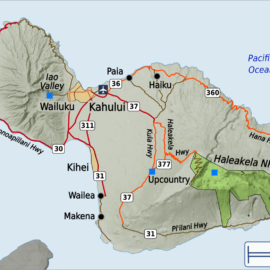
Louisiana is last or close to last in many categories but we do have a first place position in one area. Bob Marshall describes our unusual position.
Two events have always stood as positive game-changers in the history of Louisiana’s struggle to save some of its sinking, eroding and drowning coastal zone. The first was Coalition to Restore Coastal Louisiana’s success convincing the state’s business community that this environmental crisis would lead to economic disaster. The second was creation of the Coastal Protection and Restoration Authority to develop an ecosystem-wide plan to get the job done. And now there could be a third: A plan developed by Gov. John Bel Edwards’ Climate Initiatives Task Force to get the state’s contribution to the fossil fuel emissions that are causing the rapid acceleration of sea level rise to “net zero” by 2050.
nola.com
No, number one is not mentioned but many are looking at what we have done and realizing they need to do something as well.
The draft released last week is based on three pillars: Moving electricity production to renewable sources such as solar and wind, Moving light industries and manufacturing to renewable energy sources and Moving industries requiring high-heat processes — such as the petrochemical sector — to low or no-carbon hydrogen. I include the “could be” caveat because, like the coastal master plan, success will depend on buy-in from the politicians we send to Baton Rouge and Washington. The final edition of the plan will include dissenting opinions from members of the task force, which included the usual stakeholders from businesses and the environmental community as well as scientists. But the framework and pillars released are what the governor’s office will be pushing.
Once again, Bob says elections matter and what we do determines the viability of southern Louisiana.
And make no mistake: Its success is essential to keeping the bottom third of Louisiana — its industrial and population base — viable through this century. When Hurricane Katrina finally made state leaders understand that we needed a bold, expensive plan for coastal protection, our scientists immediately pointed out that there would be no dependable protection without restoration of the coastal ecosystem. And the Legislature has unanimously approved every version of that plan. But by the latest plan edition in 2017, the scientists had reached another conclusion: There can be no lasting restoration of the ecosystem without fast and dramatic reduction of emissions. That’s because, left unchecked, sea level rise caused by those emissions could begin drowning wetlands we restore by 2050. While taming emissions adequately to reach climate goals depends on a worldwide effort, Louisiana arguably ranks highest in this nation for both economic and moral responsibilities. Our economic and population centers lie within range of increased flooding from higher storm surges and wind destruction by larger tropical storms being fueled by ocean warming caused by those emissions. And the fact we live on a sinking delta landscape — for which there is no solution — means we are at much higher risk than other coastal states.
All of this will take money, money we do not have as a state.
But at the same time as we are reaching out for financial help to remain on this landscape, we are a major contributor to the cause of the disasters facing us and the rest of the world. Our oil and gas industries make the products that cause the emissions, and our state’s carbon footprint ranks fourth in the nation. As one observer remarked, “Louisiana is the China of America when it comes to emissions.” Yet the state continues to elect members of Congress who fight any national emission regulations. It’s as if we are voting to drown — and happy to take everyone else with us.
This is bad for us to be compared to China for emissions but we do have two things working for us.
The first break in that self-destructive behavior came with the Coastal Master Plan. It is now recognized as one of the most advanced, science-based climate adaptations plans in the world, and has other states and nations studying us for success. Now we have the second break. We have the first, comprehensive, progressive, publicly developed science-based plan for net-zero by any southern state, and one of the first in the nation. Is it perfect? Of course not; the dissents will be areas of fierce debate and, hopefully, compromise. But implementation is essential to our future here and will depend on voters making sure they elect people who support it. Remember, without emissions controls, there can be no restoration, and without restoration, there is no protection. And without protection, your children and grandchildren will not be able to live here.
It will be difficult as one party is anti science and the environment and if they take power at the mid-term we know backsliding will occur. We cannot afford to backslide.



